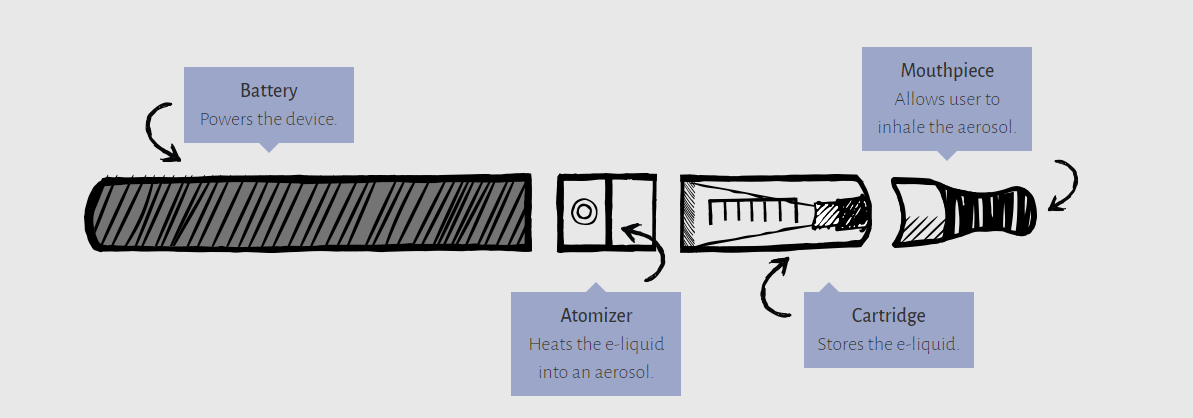TOBACCO & VAPES
What Is Tobacco?
A plant that can be dried and smoked in cigarettes, pipes, or cigars. It's the same plant that's in smokeless tobacco, known as dip, chew, snuff, spit, or chewing tobacco. Tobacco plants naturally contains nicotine and other harmful chemicals. It is highly addictive. Tobacco is the one of the biggest public health threats in the world, killing over 8 million people a year around the world. 1.3 million of those deaths are deaths caused by second-hand smoke exposure.
What Is Vaping?
Vaping is the use of an electronic device to simulate smoking. Battery powered vape devices produce an aerosol mist that is NOT water vapor. It contains nicotine, artificial flavoring, and other chemicals in ultra-fine particles that are breathed into the lungs. The average vape pod/cartridge has as much nicotine as 20 cigarettes and is also highly addictive.
How Does It Work?
The e-cigarette creates an aerosol by using a battery to heat up the liquid in the cartridge, users inhale the aerosol into their lungs. E-cigarettes can also be used to deliver marijuana and other drugs.

Health Risks
Tobacco and vape products share common chemicals that have a range of effect on the body.
- Nicotine narrows your veins and arteries, which:
- damages your heart by forcing it to work faster and harder
- slows down your blood and reduces oxygen to your feet and hands.
- Carbon monoxide deprives your heart of the oxygen it needs to pump blood around your body. Over time, your airways swell up and let less air into your lungs.
- Tar is a sticky substance that coats your lungs like soot in a chimney.
- Phenols paralyze and kill the hair-like cells in your airways. This means the cells cannot sweep clean the lining of your airways and protect you against infections.
- Tiny particles in tobacco smoke irritate your throat and lungs and cause ‘smoker’s cough’. This makes you produce more mucus and damages lung tissue.
- Ammonia and formaldehyde irritate your eyes, nose and throat.
- Cancer-causing chemicals make your cells grow too fast or abnormally- which can result in cancer cells. Smoking is known to cause at least 16 types of cancer.
Tobacco users reduce their life expectancy by about 10 years on average, it is estimated that 2/3 of all long term users will die of smoking related disease.
There is still so much we don't know about vaping and as they are relatively new to the market, long term effects are hard to assess. We do know they are:
- Addictive due to the concentrated levels of nicotine
- Toxic to developing fetuses and potentially harmful to fertility in general
- Impacts brain development
- Behavioral risks
- Evidence of serious lung disease
- Contain cancer causing chemicals like cigarettes
- Toxic nicotine exposure in both children adults
- Injury from defective batteries causing explosions and fires
Vaping & Youth
The FDA estimates that about 2.1 million youth use e-cigarettes. In Cleveland County, 8.7% of 6th graders reported using e-cigarettes and 27.8% of 12th graders reported use. (PRIDE Survey, 2023) Nicotine is hazardous to the development of the adolescent and teen brain. Vaping products are popular with youth for a variety of reasons.
- Easy to buy online
- Inexpensive
- Commonly seen on social media
- Come in fruity flavors
- Look innocent, resembling everyday used products like pens or flash drives
- Highly unregulated
If you use tobacco, it’s never too late to quit. For free help, visit https://quitlinenc.dph.ncdhhs.gov/ or call 1-800-QUIT-NOW.
